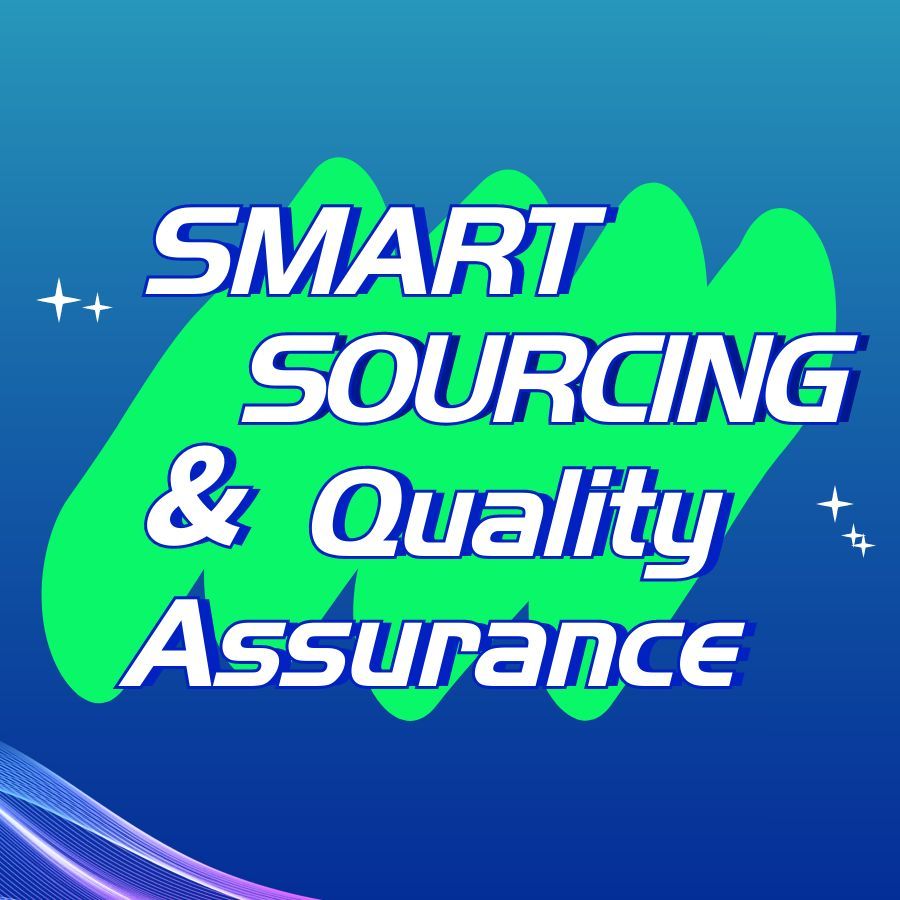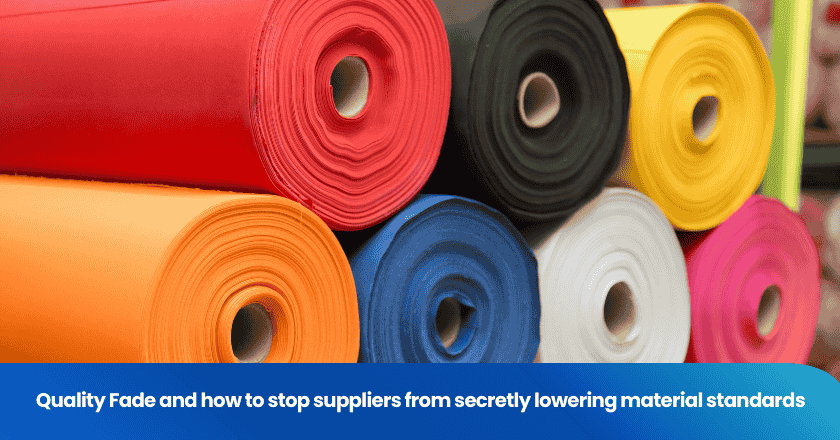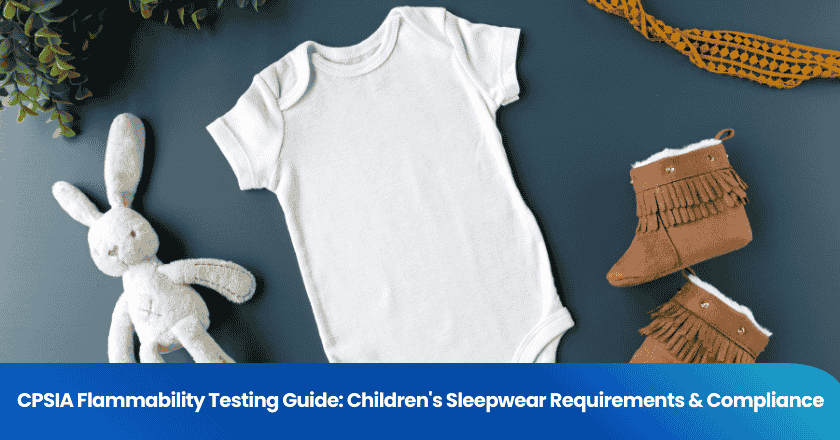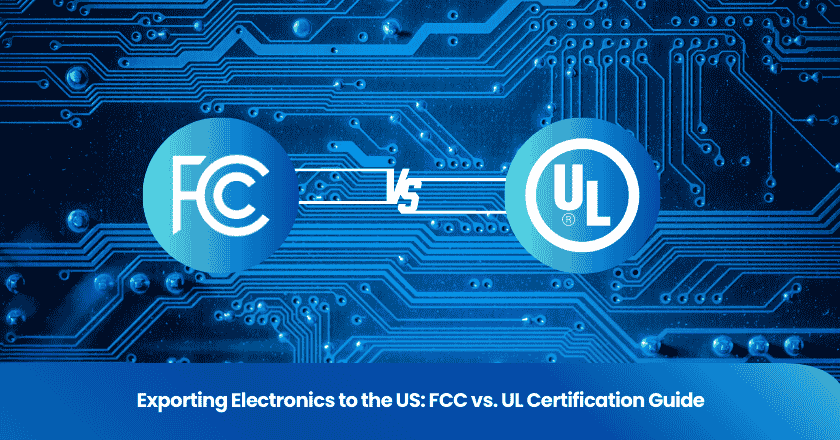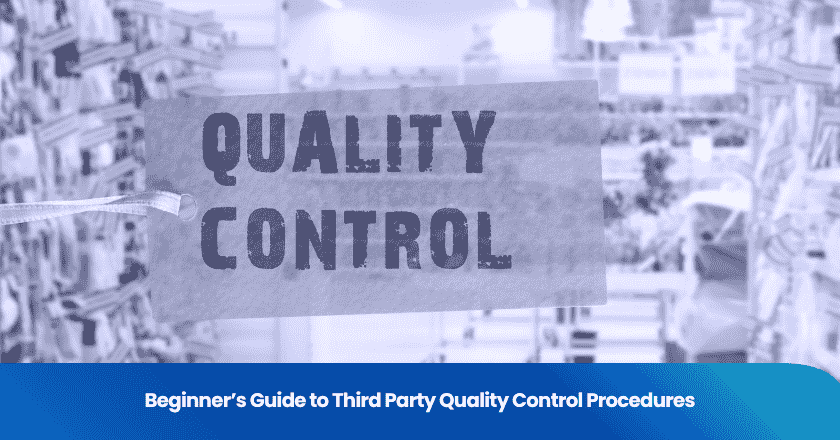
You need third party quality control to protect your business and build a strong reputation. This process offers an independent evaluation of your products through different third-party inspection services. You face several challenges when starting out:
- Communication breakdowns may cause inspection errors.
- Quality control standards often differ by country, complicating compliance assurance.
- Production delays and quality issues require close attention during inspection.
A qualified third-party inspection provider ensures consumer goods inspection meets global standards. Reliable inspection safeguards your reputation and supports customer satisfaction.
Key Takeaways
- Third-party quality control ensures your products meet international standards, helping you avoid costly mistakes and maintain compliance.
- Effective communication with your inspection provider is crucial. Clearly define expectations to prevent misunderstandings and ensure thorough inspections.
- Conduct inspections at key stages: pre-production, during production, pre-shipment, and container loading. This approach helps catch issues early.
- Use a detailed checklist to guide inspections. This ensures all critical aspects are covered and supports consistent product quality.
- Choose a reliable inspection provider with industry experience. Evaluate their reporting process and conduct a pilot inspection to assess their effectiveness.
Third Party Quality Control Overview
What Is Third Party Quality Control
You need third party inspection to ensure your product meets international standards and regulatory requirements. This process involves hiring an independent organization to assess your product at different stages of production. Third-party inspection services provide unbiased quality verification, which helps you avoid costly mistakes and maintain compliance. You gain a clear understanding of your product’s quality through impartial audits and assessments. These inspections identify issues early, so you can address them before your product reaches customers.
Tip: Third party inspection builds trust with your customers by showing your commitment to quality and consumer rights.
In the manufacturing industry, third party inspection enhances supply chain transparency. You receive detailed reports about your product’s quality and process information, which supports better decision-making and risk management. Regulatory agencies rely on third-party inspection to confirm compliance with safety standards. You benefit from early identification of problems, which improves your product's overall quality and reduces the risk of recalls.
Key Benefits
When you use third party inspection, you gain several advantages that support your business growth and reputation.
Consider the following key benefits:
| Benefit | Description |
|---|---|
| Unbiased Judgment | You receive honest assessments based on agreed-upon standards, free from external influences. |
| Risk Management | Third party inspection identifies defects early, reducing the chance of faulty products reaching customers. |
| Protecting Brand Reputation | Consistent quality builds customer trust, preventing negative reviews and damage to your brand image. |
You should consider third-party inspection if you want to strengthen your quality control process. This approach provides reliable quality verification and helps you meet customer expectations. You reduce compliance risks and improve your product’s credibility in the market. Third party inspection supports your efforts to deliver high-quality products and maintain a positive reputation.
Types of Quality Inspection
Pre-production Inspection
You start your quality inspection journey with pre-production inspection. This step takes place before manufacturing begins. You check raw materials, components, and production equipment. You confirm that everything meets your specifications and industry standards. By identifying issues early, you prevent costly mistakes and delays later in the process. Pre-production inspection helps you set a strong foundation for the rest of your project.
During Production Inspection
During production inspection happens while your products are being made. You monitor the manufacturing process and verify that workers follow your requirements. This inspection reduces the risk of shipment delays by:
- Identifying problems before they affect the entire batch.
- Monitoring production processes to ensure adherence to specifications and timelines.
- Allowing for immediate corrective actions, minimizing the risk of poor-quality products.
- Preventing issues from escalating into larger problems that could delay shipment.
- Enabling prompt rectification of defects, ensuring timely delivery.
You gain confidence that your products will meet expectations and reach customers on time.
Pre-shipment Inspection
Pre-shipment inspection takes place when production finishes and goods are ready for delivery. You check the final products for quality, quantity, and packaging. This inspection often uncovers common issues such as:
- Functional failures, like electronic devices not working as intended.
- Serious cosmetic damage, such as cracks or severe scratches.
- Missing or incorrect parts.
- Non-compliance with safety standards or regulations.
By conducting pre-shipment inspection, you ensure that only products meeting your standards leave the factory.
Container Loading Inspection
Container loading inspection occurs as your goods are packed for shipment. You verify that the correct products load into the container and that packaging is secure. This inspection contributes to supply chain security by:
- Ensuring the integrity of cargo during transit.
- Making tamper-evident features visible, so any breach is easy to spot.
- Facilitating customs inspections, as intact seals help legitimate cargo pass through checkpoints.
You protect your shipment and maintain accountability throughout the delivery process.
Preparation for Third Party Inspection
Preparing for third party inspection sets the stage for successful product quality assurance. You need to approach this process with careful planning and clear communication. By following structured steps, you increase the chances of meeting your quality control goals and delivering products that satisfy your customers.
Define Inspection Requirements
You must start by defining your inspection requirements. This step ensures that the third party inspection covers all critical aspects of your product. A well-prepared approach helps you avoid misunderstandings and missed details.
Follow these essential steps:
1. Planning and Defining the Inspection Scope
Set clear specifications for your product. Create a detailed checklist that outlines every requirement, from materials to packaging. This checklist guides the inspection team and keeps everyone aligned on expectations.
2. Conducting the On-Site Product Evaluation
Arrange for physical checks of your product at the production site. Inspectors use your checklist to verify that each item meets your standards. This hands-on evaluation helps you catch problems early.
3. Understanding Your Inspection Report
Review the inspection report carefully. Analyze the findings and recommendations to identify any issues with product quality. Use this information to make improvements before your product reaches customers.
Tip: A detailed checklist acts as your roadmap for third party inspection. It ensures nothing gets overlooked and supports consistent product quality assurance.
Select Inspection Provider
Choosing the right third party inspection provider is crucial for effective quality control. You need a partner who understands your industry and can deliver reliable results.
Evaluate potential providers using the following criteria:
| Criteria | Description |
|---|---|
| Experience | Review the provider's background in your product category and their ability to spot defects. |
| Geographic Coverage | Confirm if they operate in your supplier’s region for quick deployment of inspectors. |
| Speed | Assess their responsiveness and ability to conduct inspections promptly. |
| Technology Integration | Look for a robust management system for scheduling and tracking inspections. |
| Sample Inspection Report | Request and evaluate the detail and clarity of their inspection reports. |
| Pilot Inspection | Conduct a test run to evaluate communication and report quality. |
You should always request a sample inspection report. This document shows how thoroughly the provider checks your product and how clearly they communicate findings. A pilot inspection gives you a chance to test their process and ensure they meet your standards for product quality assurance.
Communicate Expectations
Clear communication with your third-party inspection provider prevents costly mistakes. You need to set expectations from the start and maintain open dialogue throughout the process. Best practices include:
- Clearly define inspection expectations and product requirements. This step prevents misunderstandings and ensures the provider knows exactly what to check.
- Establish well-defined purchase orders and contractual terms. These documents clarify the scope and deliverables of the inspection services.
- Maintain effective communication during the inspection process. Regular updates help you understand progress and address any issues quickly.
Note: Open communication supports a smooth inspection process and helps you achieve consistent product quality.
By preparing thoroughly, selecting the right provider, and communicating clearly, you lay the groundwork for successful third party inspection. This approach protects your business and ensures your products meet the highest standards.
Product Inspection Process
You need a structured approach to ensure your products meet the highest standards. The product inspection process covers several critical steps, each designed to identify defects and verify quality. You gain control over your supply chain and reduce risks by following a systematic inspection process.
Planning and Scheduling
You start the product inspection process by planning and scheduling each inspection. This step sets the foundation for effective quality control. You must coordinate with suppliers and inspection teams to ensure every stage receives attention. The typical timeline for third party inspection includes several key checkpoints:
1. Pre-Drywall Inspection: Schedule this after framing, electrical, plumbing, and HVAC rough-ins finish, usually 60-90 days after construction begins.
2. Initial Production Check (IPC): Conduct this early in the production process to confirm quality standards.
3. During Production Inspection (DUPRO): Arrange inspections at different points during production to monitor ongoing quality.
4. Final Random Inspection (FRI): Plan this before shipment to verify the final product meets specifications.
5. Pre-Shipment Inspection (PSI): Complete this just before shipping to confirm quality and compliance.
You ensure that each inspection occurs at the right time, preventing defects from reaching customers. Careful scheduling helps you catch problems early and maintain consistent product quality.
Tip: Early planning and clear timelines help you avoid last-minute surprises and keep your production on track.
On-site Evaluation
You move to on-site evaluation once planning is complete. This step involves a physical review of your products at the manufacturing site. The on-site product evaluation allows you to see the actual conditions and processes in real time. Third party inspection teams follow standard procedures to ensure thoroughness:
1. Define inspection requirements based on your product specifications.
2. Select a qualified third-party inspection provider with expertise in your industry.
3. Submit samples and documentation for review.
4. Conduct on-site or laboratory inspection to assess product quality and identify defects.
5. Generate and review the inspection report for detailed findings.
6. Use the report to make informed decisions about product release or corrective actions.
You benefit from direct feedback and immediate identification of defects. On-site evaluation gives you confidence that your products meet expectations before they leave the factory.
Sampling and Testing
You must use precise sampling and testing methods to ensure reliable results during the product inspection process. Third party inspection relies on industry standards to determine how many products to check and what criteria to use. The process involves several steps:
| Step | Description |
|---|---|
| 1 | Determine the lot size. |
| 2 | Select the appropriate inspection level. |
| 3 | Use AQL tables to establish sample sizes and acceptance criteria for defects. |
You use AQL (Acceptable Quality Limit) standards to guide your sampling strategy. The sample size depends on the lot size and inspection level. AQL tables help you set clear acceptance criteria for defects, ensuring that only products meeting your standards pass inspection. You reduce the risk of defective products reaching customers and maintain high quality control throughout the process.
- AQL standards provide a reliable framework for sampling.
- Sample size reflects the total lot and inspection level.
- AQL tables define how many defects are acceptable before rejecting a batch.
Note: Consistent sampling and testing protect your reputation and ensure every product meets your quality requirements.
Documentation
You need thorough documentation to support transparency in the product inspection process. Proper records help you track quality control efforts and communicate with stakeholders. You should maintain open communication with suppliers and share real-time updates on inspection progress. Suppliers must provide essential documentation, including product specifications, certifications, and production schedules. You grant access to production sites and warehouses for comprehensive evaluations.
You use documentation to verify compliance and support decision-making. Detailed records allow you to address defects quickly and improve future inspection processes. You build trust with customers and partners by demonstrating your commitment to quality and transparency.
Alert: Accurate documentation is your safeguard against disputes and misunderstandings in the inspection process.
You strengthen your quality control system by following these steps in the product inspection process. You identify defects early, maintain high product standards, and ensure every shipment meets your expectations.
Inspection Report
A clear inspection report gives you the information you need to make decisions about your product. Understanding the structure and findings of a third-party inspection helps you maintain quality control and protect your business.
Report Structure
You receive a detailed inspection report after each third-party inspection. This document follows a standard format, making it easy to review and compare results. The table below outlines the key components you should expect:
| Key Component | Description |
|---|---|
| Quality Assessment | Inspects materials and workmanship, noting any discrepancies in your product. |
| Safety Compliance | Evaluates safety protocols and compliance with standards, offering recommendations. |
| Compliance with Specifications | Checks your product against project specifications, highlighting any deviations. |
| Documentation Review | Reviews permits, certifications, and quality control records for completeness. |
| Recommendations and Corrective Actions | Suggests ways to address discrepancies and improve quality and compliance. |
| Conclusion | Summarizes findings, indicating areas needing attention for compliance and quality. |
Interpreting Results
You need to read the inspection report carefully to understand your product’s quality. Follow these steps to interpret the results:
1. Check identifying information such as material description, grade, and dimensions.
2. Review chemical and mechanical analysis to ensure your product meets required standards.
3. Verify inspection details, including parties involved and peer reviews.
4. Confirm certifying signatures for accuracy.
5. Cross-reference heat numbers with product markings and shipping documents.
6. Identify benchmarks and ensure test results fall within safe ranges.
7. Look for red flags like missing information or discrepancies.
8. Ensure traceability by matching all documentation.
Tip: Third-party inspection agencies help you identify risks early and improve customer satisfaction. Their expertise protects your reputation and streamlines the inspection process.
Addressing Issues
When the inspection report highlights issues, you need to act quickly. Use these strategies to address problems and maintain quality control:
| Strategy | Description |
|---|---|
| Standardization | Establish standardized inspection methods to improve data quality. |
| Automation | Use inspection software to automate corrective actions and ensure follow-up. |
| Mobile Apps | Conduct inspections with mobile apps for immediate data collection. |
You strengthen your product quality by responding to findings and improving your inspection process.
Best Practices for Third Party Inspection
Communication
You need strong communication to achieve effective third party inspection. Open and honest dialogue builds trust between you, your suppliers, and inspection teams. You should engage with third parties and create clear channels for sharing information. Real-time updates through client portals keep everyone informed about production progress and inspection results. Schedule regular check-ins to discuss project status and address concerns quickly. Provide detailed reports on production efficiency and quality checks. This approach reassures all parties and enhances collaboration. When you align objectives across your business, you foster innovation and mutual understanding.
- Share real-time updates using digital platforms.
- Schedule routine meetings to review inspection progress.
- Build strong connections with suppliers and inspection teams.
Tip: Consistent communication reduces misunderstandings and supports a smooth inspection process.
Transparency
Transparency in third party inspection strengthens your quality control system. Independent inspectors act as guardians of product quality, providing comprehensive oversight of your production and supply chain. Regular inspections at critical points ensure your product meets or exceeds industry standards. Objective and impartial inspection results give you a clear understanding of product quality before shipment approval.
Third-party inspection agencies act as quality guardians, providing comprehensive oversight of the entire production and supply chain. This oversight helps identify risks early and ensures compliance with global standards, which is crucial for maintaining product quality. Regular inspections at critical points in the manufacturing process ensure that products meet or exceed industry standards. This proactive approach prevents unsafe or substandard products from reaching consumers, thereby enhancing product quality. Independent third-party inspectors provide objective and impartial inspection results. Their detailed reports and analyses give brands a clear understanding of product quality before shipment approval, ensuring high standards are met.
You gain confidence that your product will satisfy customer expectations and comply with regulations.
Continuous Improvement
Continuous improvement keeps your third party inspection program effective and relevant. You should assess current workflows to identify pain points and opportunities for better quality control. Customize digital inspection systems to match your business processes and ensure proper integration. Develop training programs so your team can use new inspection technologies effectively. Use root cause analysis to identify recurring problems and implement preventive measures based on inspection data. These steps enhance overall operations effectiveness and help you deliver high-quality products consistently.
| Step | Description |
|---|---|
| Assessment and Selection | Evaluate current workflows to identify pain points and opportunities for improvement. |
| Customization and Configuration | Customize digital inspection systems to match specific business processes and ensure proper integration. |
| Training and Adoption | Develop comprehensive training programs to ensure effective use of new inspection technologies. |
Note: Continuous improvement ensures your inspection process adapts to changing industry standards and customer needs.
Common Mistakes to Avoid
Overlooking Details
You might feel tempted to rush through an inspection, but missing small details can have serious consequences. Overlooking details often leads to undetected trends in product failures. You may miss specific risk factors or defects, which can cause safety issues for your customers. A lack of thorough examination can turn minor problems into major ones, sometimes resulting in costly product recalls.
Common mistakes include:
- Failing to understand local code requirements
- Inadequate pre-inspection preparation
- Poor documentation and record keeping
- Skipping internal quality assurance inspections
- Rushing the inspection process
You protect your product and reputation by paying close attention to every aspect of quality control.
Misunderstanding Scope
You need to understand the full scope of each third-party inspection. If you misunderstand what the inspection covers, you risk missing critical areas of your product or process. Some companies neglect to prepare for specialized inspections or fail to engage a professional management team. This oversight can leave gaps in your quality control system and expose your business to compliance risks.
To avoid this mistake:
- Clarify inspection requirements with your provider
- Review all documentation before the inspection begins
- Ensure all team members understand their roles
A clear understanding of scope ensures your product meets every quality standard.
Ignoring Findings
You should never ignore findings in your inspection reports. Ongoing inspections keep your suppliers accountable and prevent costly returns or misunderstandings. Addressing issues promptly strengthens your supplier relationships through transparent communication and fosters mutual understanding.
If you ignore findings, you risk repeating the same mistakes and damaging your product’s quality in the long run.
Key actions include:
- Review all inspection results carefully
- Implement corrective actions without delay
- Communicate openly with your suppliers
By taking inspection findings seriously, you maintain high quality and build trust throughout your supply chain.
Getting Started
Action Steps
You can launch your third party inspection program by following a clear sequence of steps. Begin by understanding your business context. This includes both internal operations and external market conditions. Next, determine the scope of your quality management system. You need to know which product lines and processes require inspection. Define your quality policy and outline the procedures that support your goals. These steps help you set a strong foundation for third party inspection and ensure your product meets industry standards.
| Step | Description |
|---|---|
| 1 | Identify your internal and external business context. |
| 2 | Determine the scope of the QMS after understanding the organization and its context. |
| 3 | Define your quality policy and quality processes. |
Set quality objectives that align with recognized standards. Identify risks in your supply chain and develop responses to address them. Document every process and confirm compliance with quality management requirements. You should communicate these objectives to your team and inspection provider. This approach supports consistent product quality and reliable inspection outcomes.
Tip: Start with a detailed checklist for each product. This ensures every inspection covers critical requirements and reduces the risk of missing important details.
Resources
You have access to a range of resources that simplify third party inspection and improve product quality. Modern inspection platforms offer speed and precision, helping you validate third-party controls quickly. Natural language processing and generative AI review security documents and certifications efficiently. Comprehensive document review tools analyze SOC reports, compliance attestations, and other records. These resources highlight potential risks in vendor submissions and support better decision-making.
You should establish quality objectives based on quality management standards. Identify risks and create effective responses. Document all inspection processes and ensure compliance with quality requirements. Explore online directories to find reputable third party inspection providers. These resources help you maintain high product standards and streamline your inspection workflow.
You gain long-term value by making third-party inspection a core part of your quality strategy. Early detection of defects and compliance issues saves costs and builds trust in your product. Regular inspection ensures your product meets standards, increases customer satisfaction, and reduces risk.
- Early identification of risks prevents financial losses and legal issues.
- High-quality product inspection enhances your credibility and customer loyalty.
- Transparency in quality assurance strengthens your reputation in the market.
To improve your quality assurance, establish clear standards, conduct multiple types of inspection, and work closely with suppliers. Consistent focus on product quality leads to lasting business success.
FAQ
What is the main purpose of third-party inspection?
You use third-party inspection to verify product quality and compliance with industry standards. This process helps you identify defects early and ensures your products meet customer expectations.
When should you schedule a third-party inspection?
You should schedule third-party inspection at key stages: before production, during production, before shipment, and during container loading. Timely inspections help you catch issues before products reach customers.
How do you choose a reliable inspection provider?
You select a provider with experience in your industry, strong communication skills, and a clear reporting process. Review sample reports and request a pilot inspection to evaluate their effectiveness.
What documents should you prepare for inspection?
You need to prepare product specifications, quality checklists, certifications, and purchase orders. These documents guide the inspection team and ensure accurate evaluation.
Can third-party inspection reduce your business risks?
Yes. Third-party inspection helps you detect problems early, avoid costly recalls, and maintain a strong reputation. You gain confidence that your products meet all required standards.
Grow your business with TradeAider Service
Click the button below to directly enter the TradeAider Service System. The simple steps from booking and payment to receiving reports are easy to operate.

